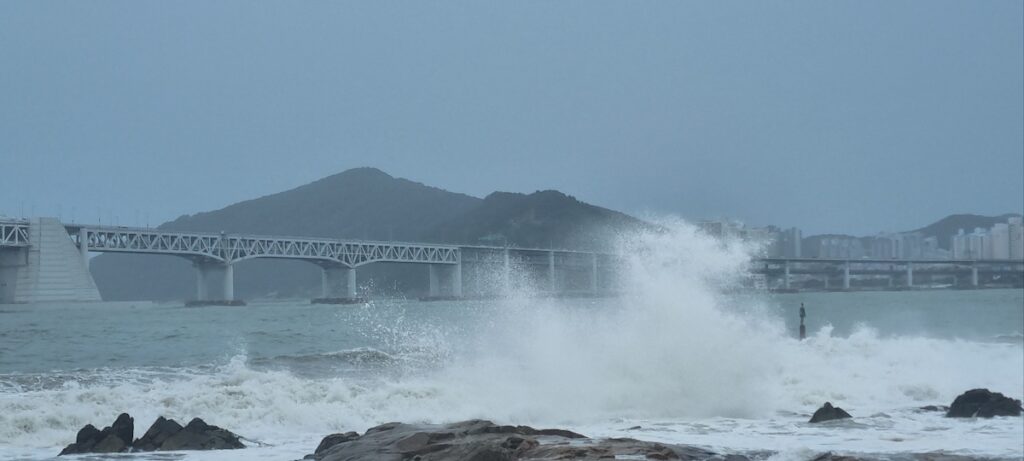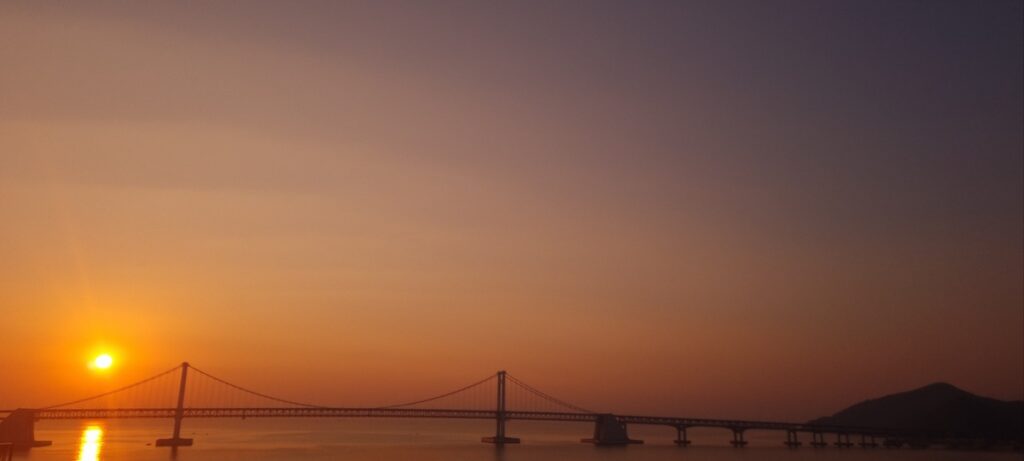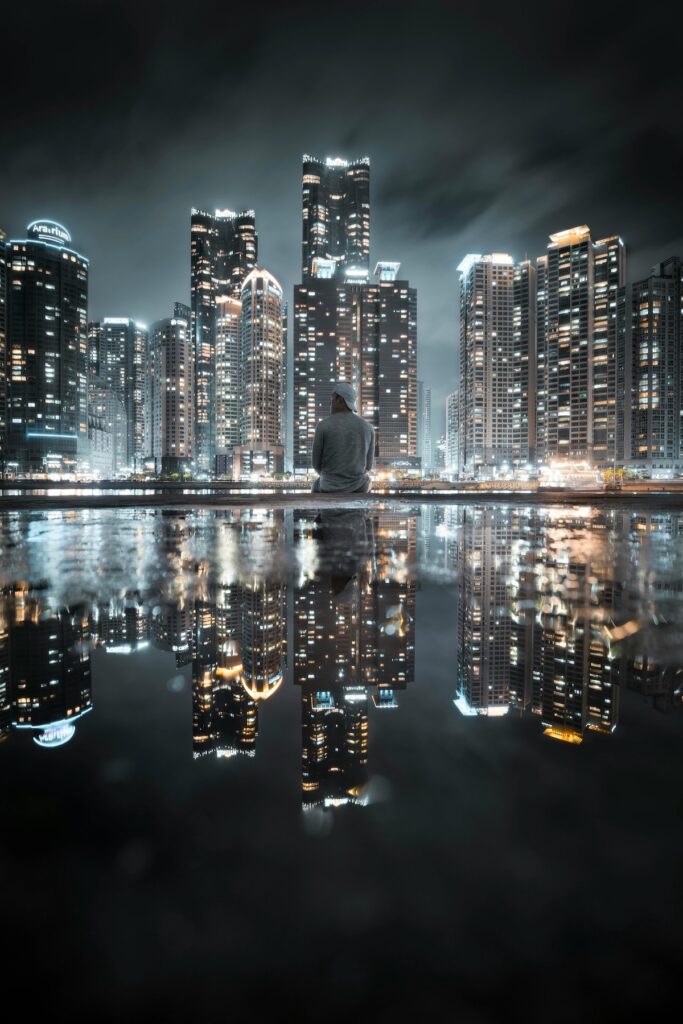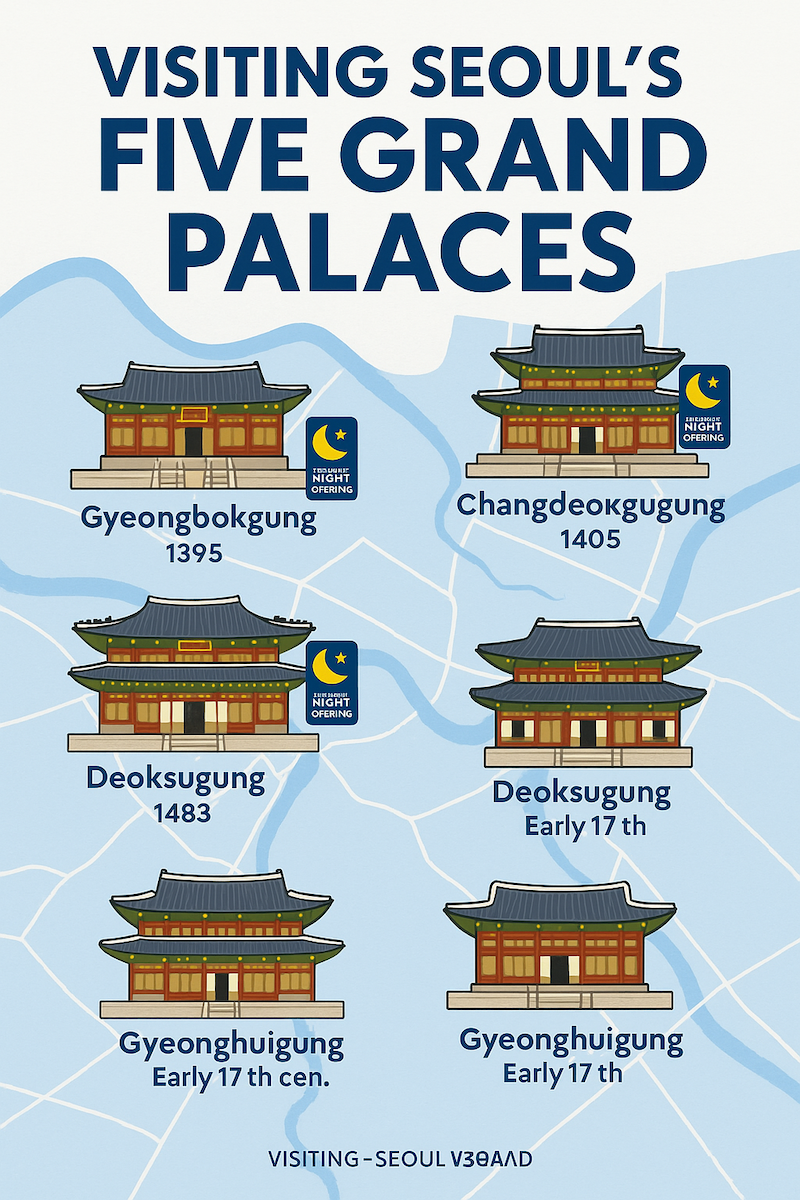Introduction: The Symbol of Busan
When people think of Busan, Korea’s second-largest city, images of sandy beaches, fresh seafood, and vibrant nightlife often come to mind. But ask any local, and they’ll tell you that the true symbol of the city is Gwangan Bridge (광안대교, also known as Diamond Bridge).
Stretching gracefully across the sea between Haeundae and Suyeong districts, Gwangan Bridge is more than just infrastructure. It is a landmark that defines Busan’s skyline, a stage for international festivals, and a backdrop for countless memories. Whether viewed from Gwangalli Beach or Haeundae Beach, the bridge embodies the city’s energy—modern, dynamic, yet deeply connected to its coastal traditions.
For foreigners visiting Korea, Gwangan Bridge is not just a photo spot. It is the starting point for experiencing the real Busan.
The Bridge: More Than Steel and Lights
Completed in 2003, Gwangan Bridge spans 7.4 kilometers, making it Korea’s longest bi-level bridge. But its significance is not in its length—it’s in its role as a cultural icon.
- Night View: At sunset, the bridge glows with colorful LED lights, changing patterns each night. The reflection of lights on the ocean is one of the most romantic scenes in Korea.
- Accessibility: Unlike bridges that are purely for transit, Gwangan Bridge connects two of Busan’s busiest districts, making it a lifeline for daily life.
- Events on the Bridge: While usually closed to pedestrians, on rare occasions the bridge itself becomes a stage—for marathons, cycling races, and city-wide festivals. These events are rare, making them highly anticipated moments in Busan’s yearly calendar.

Annual Highlights: Gwangan Bridge Through the Year
1. Busan Fireworks Festival (부산 불꽃축제)
- One of Korea’s biggest festivals, held every autumn.
- Gwangan Bridge becomes the centerpiece as fireworks explode over and around it, drawing millions of visitors.
- Foreigners often rank it as one of the most memorable experiences in Korea, comparable to global events like Sydney’s New Year fireworks.
2. Gwangan Bridge Marathon
- Only a few times a year, the bridge opens for runners and cyclists.
- Participants get a once-in-a-lifetime chance to run across the sea with the Busan skyline as backdrop.
- It’s not just a race; it’s a symbol of Busan’s openness and energy.
3. Cultural & Music Events
- Live concerts, drone shows, and seasonal festivals often use Gwangan Bridge as a stage.
- The bridge itself has become a trending “YouTube Live backdrop” with countless streamers broadcasting its night view.
The Neighborhoods: Gwangalli and Haeundae
Gwangalli Beach (광안리 해수욕장)
- Directly facing Gwangan Bridge, Gwangalli is where locals and travelers gather for food, drinks, and relaxation.
- By day, it’s a calm beach perfect for swimming and sunbathing. By night, it transforms into a lively social hub with bars, cafés, and restaurants offering bridge views.
- Uniquely Korean: Unlike in many countries, it’s normal to enjoy a beer or soju outdoors at the beach with takeout food. Foreigners often find this freedom refreshing.
Haeundae Beach (해운대 해수욕장)
- Korea’s most famous beach, located just east of Gwangan Bridge.
- Known for its luxury hotels, bustling nightlife, and international visitors.
- Popular for summer festivals, film screenings (Busan International Film Festival), and K-pop concerts.
Together, Gwangalli and Haeundae form the “dual heart” of Busan’s coastal culture, with Gwangan Bridge linking the two.
The Surrounding Lifestyle and Economy
The presence of Gwangan Bridge has shaped entire districts:
- Restaurants & Cafés: Many establishments highlight “bridge view” as a selling point. Rooftop bars and cafés with direct views of Gwangan Bridge are always packed, especially by younger Koreans and foreign visitors.
- Nightlife: Gwangalli is especially popular for its mix of casual and trendy bars. It has a reputation for being more relaxed and authentic compared to Seoul’s nightlife districts.
- Local Business: From seafood stalls to craft beer breweries, the economy of the area thrives on both locals and tourists flocking to see the bridge.

A Place for Global Culture
Gwangan Bridge has also become a stage for Korea’s global identity:
- YouTube & Instagram Hotspot: Countless content creators livestream the bridge’s night view, making it a global digital landmark.
- International Visitors: Busan is increasingly a cruise ship stop, and Gwangan Bridge is one of the first sights travelers see.
- Cultural Icon: Movies, K-dramas, and even K-pop music videos often feature the bridge, embedding it in the global imagination of Korea.
Why Foreigners Must Visit Gwangan Bridge First
If you are a foreigner visiting Busan for the first time, there are many things to see—the Jagalchi Fish Market, Gamcheon Culture Village, Beomeosa Temple. But ask any Korean, and they will tell you: start with Gwangan Bridge.
Why?
- It combines tradition (markets, beaches) with modernity (lights, festivals).
- It is a community hub, not just a tourist spot.
- It’s iconic—no photo album of Busan is complete without it.
- It represents Busan’s spirit: open to the sea, full of life, and connected to the world.
Conclusion: Gwangan Bridge as Busan’s Cultural Core
Gwangan Bridge is more than architecture. It is Busan’s beating heart, shaping the city’s festivals, economy, and lifestyle. By day, it’s a peaceful backdrop; by night, it’s a dazzling showpiece. Throughout the year, it marks time with fireworks, marathons, and celebrations that bring people together.
For foreigners, visiting Gwangan Bridge and its surrounding neighborhoods—Gwangalli and Haeundae—is not optional. It’s essential. It’s here that you taste the food, feel the rhythm of nightlife, and see why Busan is not just Korea’s port city, but a cultural capital in its own right.
So if you only have one evening in Busan, make it here: a cold beer in your hand, the bridge glowing above the waves, and the city of Busan unfolding before you.

